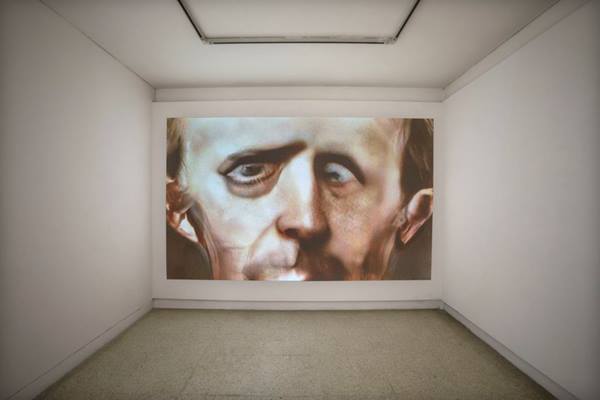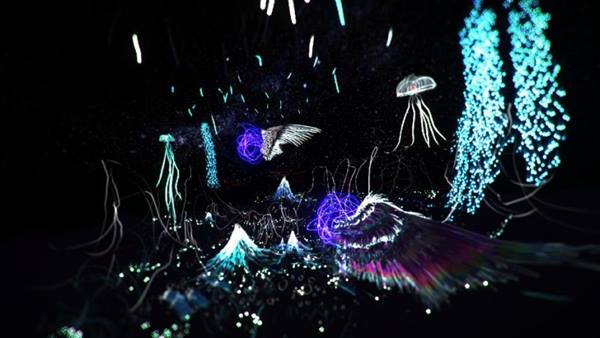How Has Technology Complicated the Story of Art and Artist
Fine art and technology have a complex just meaningful history of working together and influencing one another. In many ways, they accept evolved aslope each other to make it at their place in the globe today; a digital age where they constantly overlap and portray new ideas. Christie's Education discusses how the innovations in technology have directly impacted the art world, and volition continue to exercise so in the years to come.
Innovations in Art
With every new evolution in applied science, art changes likewise. Still, this doesn't just apply to their production. The way art is viewed, shared, consumed and subsequently sold is constantly transforming too. Technology has made art far more accessible. Just like with countless other aspects of mod life, the internet has immune art to be consumed in a more straight way, opening the manufacture to a wider and more diverse audience. Museums showcase collections online, and artists accept all the tools they need at their fingertips to promote and sell their own pieces – often without the challenges that come with running a concrete exhibit.
It'southward clear that the relationship between fine art and technology has led to many exciting new pieces and techniques. Significant innovations from the past couple of decades include:
AI-Generated Art

news.artnet.com
Is Artificial Intelligence the next keen Fine art Movement? Although experts endeavor to keep us in check and suggest the revelation is still in its infancy, it's hard not to appreciate this extraordinary innovation in the art earth. Blurring the line between human and machine, AI-generated fine art offers us a new kind of unorthodox creativity. Yet, new findings practice not come without hesitance. Some contend that art generated through computer science is definitely not art, or creative. Nevertheless, the example prototype above created by Mario Klingemann, testify us artists are continuing to experiment, combining fine art and technology further, as one.
Blockchain
![]()
Iconic Show
Blockchain applied science has multiple purposes for the art world, and has the potential to make an even more than pregnant impact. In a 2014 written report, The Fine Arts Practiced Plant (FAEI) found that over 50% of the artworks it had examined were either forged or not attributed to the correct creative person. The ascent of blockchain tin can assist change this and maintain the all-important authenticity in the industry.
We spoke with Anne Bracegirdle, Senior Manager, Pace X well-nigh the cadre applications of Blockchain technology ahead of the upcoming Art and Tech: Blockchain course which she is teaching on at Christie's Education, New York on December 10.
What is blockchain art?
Interestingly, "blockchain art" isn't quite an authentic phrase. I'm happy to outline the dissimilar ways blockchain is utilized by artists, however, to assistance readers sympathize the correct questions to ask.
"Blockchain fine art" may refer to concrete artworks that are tokenized. More likely, information technology may refer to digital art, which has the capacity to exist editioned on a blockchain via a 'hash,' the equivalent of a digital identity (digital fine art tin take the form of TIF files, gifs, jpegs etc.). Artists are also using blockchain as a medium -- notable examples are Kevin Abosch's projection IAMA Money and his collaboration with Ai Wei Wei chosen Priceless. Artists can employ blockchain to fractionalize (or divide) their piece of work into pieces, each of which tin can be owned separately. I encourage your readers to wait into the Public Key/Individual Cardinal projection at the Whitney Museum for a great example of how fractionalization can create new forms of ownership. Finally, blockchain is being utilized for crypto-collectible trading platforms like CryptoPunks and CryptoKitties.
How can you sell fine art on a blockchain?
Blockchain engineering science is currently being used to edition and sell digital art via digital art marketplaces, however these platforms aren't all the same mainstream. To access them, i needs to understand how to use a digital wallet and cryptocurrency. Once these selling platforms start accepting Fiat currency, I think more people will experience comfortable trading digital art. There is an opportunity here to brainwash people on how to purchase digital fine art, how to access a blockchain, and how to recall nigh digital scarcity. I believe this education is necessary for digital art to get more mainstream.
Secondly, there are opportunities to utilize blockchain platforms to simplify the trading of concrete artwork, and create industry-wide title registries. To move forward with this solution, however, the industry must determine how to connect the concrete works to a blockchain registry, and there are a number of companies creating solutions currently. It'southward my belief that the data must exist connected to the property for a solution to office as a truthful supply concatenation. Nosotros volition also take to agree upon which registry to use, and this decision-making may require the formation of an fine art globe consortium.
How can you lot sell blockchain art?
The real success in utilizing blockchain will ascend when trusted industry leaders and experts reach a consensus on the platforms nosotros should utilize. Blockchain provides the opportunity for competitors to share data while maintaining institutional and personal privacy, which would simplify our clients' lives dramatically. The increased transparency and available information would also brand our industry more accessible to more people. To get there, however, our first footstep is to hold upon an industry provider, or providers with interoperable platforms.
Find out more about blockchain and art on our upcoming course in New York Art and Tech: Blockchain which takes identify on December 10.
Virtual Reality

Yahoo News
Using headsets and technologies, including hardware similar the Oculus Rift and Google Glass, institutions and artists are experimenting with virtual reality to create and share dynamic and immersive art experiences. Developing these three-dimensional and simulated environments is potentially one of the well-nigh exciting innovations in art, particularly for the consumer. In many ways, information technology has completely transformed the creative feel.
On the opposing side, in that location are concerns beyond the art globe as to who owns the pieces. For case, if created with Tilt Castor, artists ain their work, but Google retains a worldwide license to reproduce or modify the work for promotion or development on their own platforms. In reality, in that location are bound to exist teething issues with such a new slice of technology. These are likely to be ironed out equally the manufacture gets up to speed with the charge per unit that engineering science is progressing.
Information technology is evident that the art landscape is undergoing a drastic transformation as it enmeshes with engineering science. These 2 disciplines may seem different or contradictory – however, we have shown that at that place is a lot that binds these 2 together. With rapid new advancements in engineering and shifting perception of fine art in both its artists and consumers, we can expect to run into exciting new developments over the coming decades, and a better agreement of how these volition affect the creative world every bit a whole.
Source: https://education.christies.com/news/2019/may/growing-relationship-between-art-technology
0 Response to "How Has Technology Complicated the Story of Art and Artist"
Post a Comment